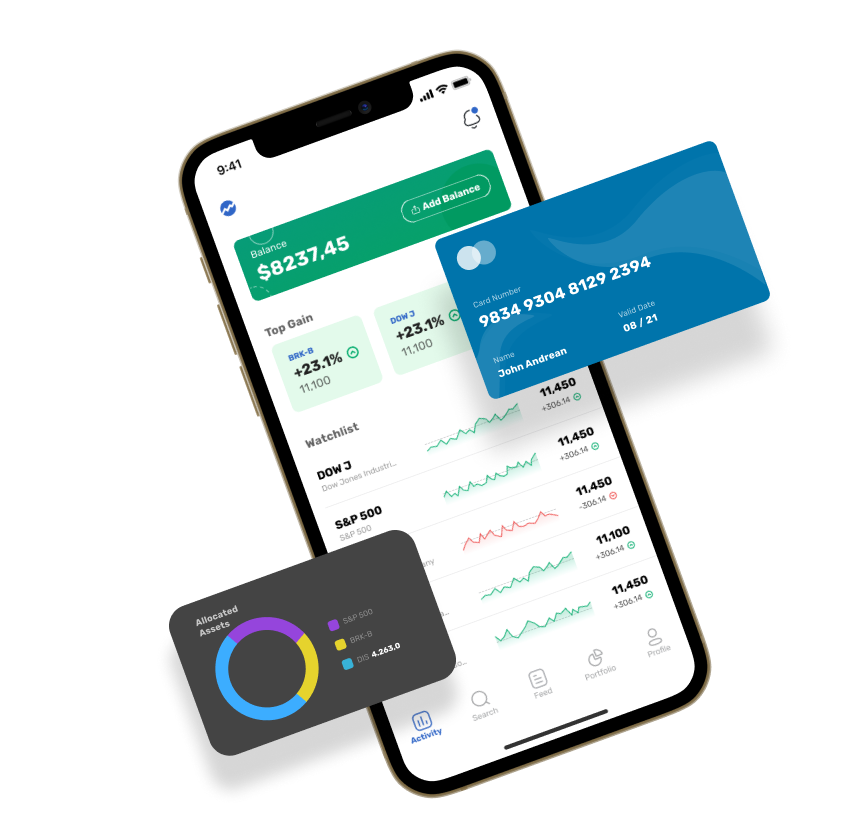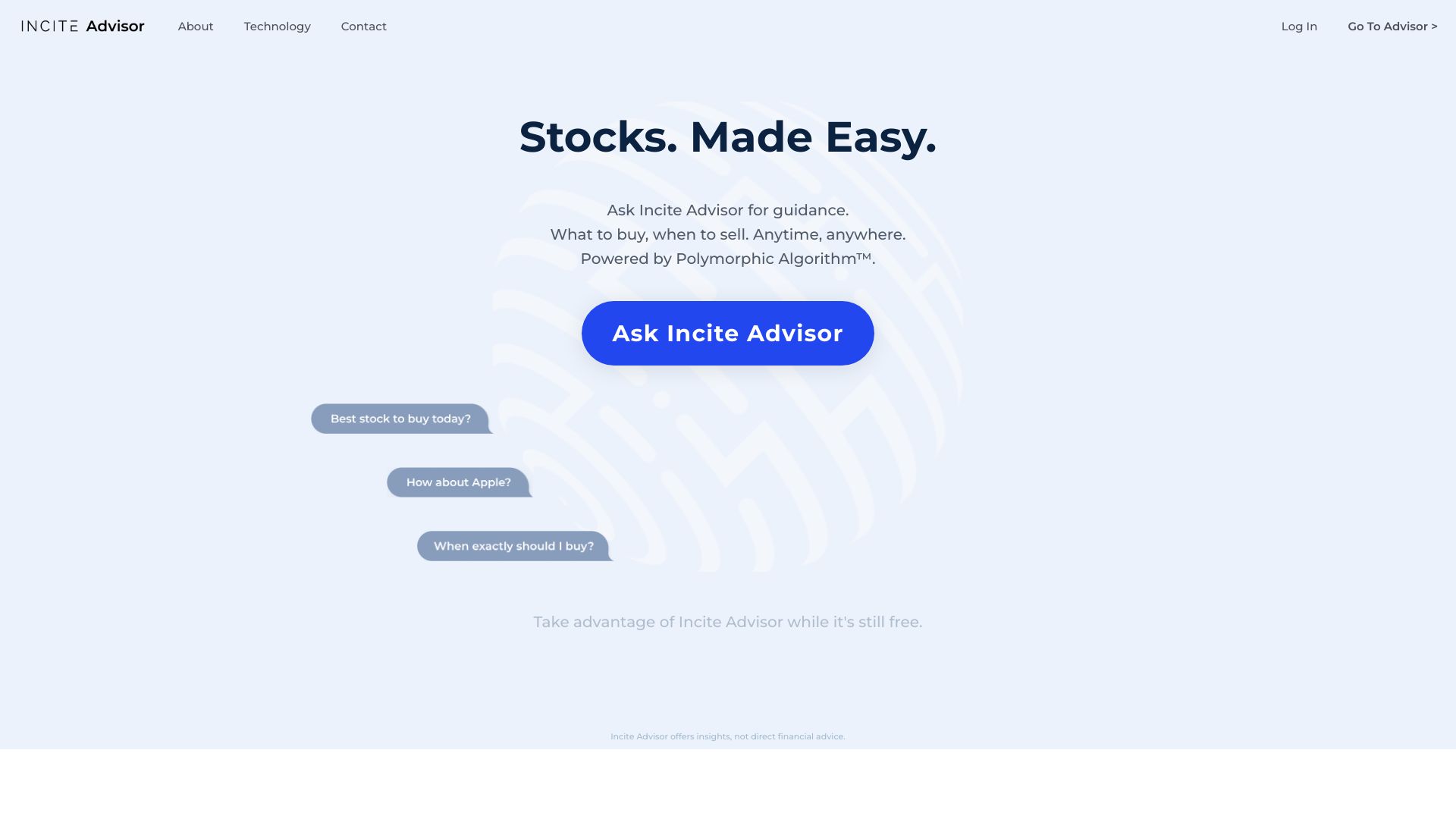20 Excellent Ideas For Selecting AI Stock Trading Platform Sites
20 Excellent Ideas For Selecting AI Stock Trading Platform Sites
Blog Article
Top 10 Tips To Evaluate The Interface For Users And User Experience Of Ai Trading Platforms That Predict And Analyze Stocks
The User Interface and the User Experience of AI trading platforms for stock prediction/analysis are critical in ensuring their usability and effectiveness. They also contribute to the overall satisfaction. A poorly-designed interface can inhibit decision-making even if AI models underlying it are reliable. Here are the top 10 guidelines for evaluating the UX/UI of these platforms:
1. The ease of use and the user-friendlyness are important factors to consider.
Navigation: The platform must be user-friendly. It should be clear menus, buttons, and workflows.
Learning curve: Determine the speed at which new users grasp and use a platform without extensive training.
Consistency: Search for designs that are consistent (e.g. buttons or color schemes and so on.) throughout the whole platform.
2. Make sure you check for customizability.
Dashboard customization: See whether dashboards are customizable to display charts, data and metrics relevant to the user.
Layout flexibility: Ensure that your platform permits you to reorder widgets, tables and charts.
Check the platform's dark/light options or visual preferences.
3. Visualize Data
Quality of the chart - Make sure that the website has interactive charts in high resolution (e.g., candlestick charts and line charts) and includes zooming, panning and other features.
Visual clarity: Make sure that the information is clearly displayed, including appropriate labels toolstips, legends and so on.
Real-time Updates: Make sure to check whether your graphs are updated with the latest market information.
4. Check the responsiveness and speed.
Loading speed: Check whether the platform is loading quickly, even when you have huge data sets.
Real-time performance: Find out whether the platform can manage real-time feeds of data, without delay or lag.
Cross-device compatibility : Check if the platform is compatible with all devices (desktops mobiles, tablets, desktops).
5. Evaluate Accessibility
Mobile app accessibility: Determine whether the platform offers a mobile application with full capability to trade while on the move.
Keyboard Shortcuts: Make sure your system supports keyboard shortcuts.
Accessibility Features: Check if the platform is compliant with accessibility standards.
6. Check out the Search and Filtering Functions and Examine Search
Search efficiency: Ensure the platform is able to let users quickly look up the indices, stocks or any other asset.
Advanced filters: Check whether users have the ability to apply filters (e.g., by sector, market cap, performance indicators) to narrow results.
Saved searches: Check whether you are able to save searches and filters which are often used.
7. Be sure to check for alerts and notifications.
Customizable alarms: Make sure users are able to set up alerts for specific conditions.
Notification Delivery: Examine to see if notifications can be delivered in a variety of methods (e.g. via email, SMS or app notifications).
Examine the speed and accuracy of alerts.
8. Integrate with other tools
Broker integration: The platform should be linked to your brokerage account to ensure that trades can be made easily.
API access: Check whether the platform permits advanced users to design customized tools and workflows.
Third-party Integrations: Make sure the compatibility of your platform with any other programs (e.g. Excel, Google Sheets and trading bots).
9. Assessment Help and Support Features
Check the onboarding tutorials.
Help center: Make sure the platform is well-equipped with a help center or knowledge base.
Customer support: See whether you have a fast customer support (e.g. live chat, email or phone).
10. Test Overall User satisfaction
User feedback Take note of testimonials and research in order to gauge the satisfaction of customers.
Trial time: You may make use of a demo or a no-cost trial period to test the platform and test its suitability.
Examine error handling.
Bonus Tips:
Aesthetics: While functionality is key, a visually appealing design can enhance the overall user experience.
Performance under pressure: Test the platform during volatile market conditions to make sure that it is steady and flexible.
Find out if the platform offers an online community for users where they can share feedback and share tips.
Use these suggestions and you can evaluate the UI/UX of AI-based stock prediction/analysis trading platforms. They'll be easy to use efficient, and effective, as well as aligned your trading needs. A great UI/UX will enhance your ability make informed decisions and perform trades effectively. Check out the top rated recommended you read about ai for trading for blog tips including ai for stock predictions, investing ai, ai trading tools, ai trading tools, ai trade, ai investing app, best ai stock trading bot free, ai for stock predictions, ai stock trading, stock ai and more.
Top 10 Suggestions For Evaluating The Scalability And Accuracy Of Stock Trading Platforms Based On Ai
To ensure that AI-driven prediction platforms and trading platforms are able to handle the growing quantity of user input, data and market complexity, it is essential to evaluate their scalability. These are the top 10 suggestions to evaluate the capacity of these platforms.
1. Evaluate Data Handling Capacity
Tips : Find out if the platform has the ability to analyze and process large datasets.
Why: Scalable platform must be capable of handling the increasing amount of data without compromising performance.
2. Test Real-Time Processor Capabilities
Try the platform out to see how it handles streams of data in real time for example, breaking news or live price updates.
The reason is that real-time trading decisions require real-time data analysis. Delays can result in lost opportunities.
3. Check for Cloud Infrastructure and Elasticity
Tips. Find out if the platform is using cloud-based infrastructure, such as AWS, Google Cloud and Azure, which can expand resources according to demand.
Why? Cloud platforms are elastic and are able to be scaled up and down based on demands.
4. Examine Algorithm Efficiency
TIP: Check the computational power (e.g. deep learning, reinforcement learning) of the AI models used for prediction.
Why: Complex algorithms consume a lot of energy. So, optimizing them will help you scale.
5. Study the parallel Processing and distributed computing
Verify if your platform supports the concept of distributed computing or parallel processing (e.g. Apache Spark, Hadoop).
Why? These technologies can accelerate data processing across multiple nodes.
6. Examine API Integration and Interoperability
TIP : Make sure your platform integrates with other APIs like brokers and market data providers. APIs.
Why: Seamless platform integration allows it to adapt to any new data sources or trading environment.
7. Analyze User Load Handling
To test the effectiveness of your platform, simulate high-volume traffic.
The reason: Performance of a platform that is scalable shouldn't be affected by the growth in users.
8. Review the model of Retraining and its Adaptability
Tip: Determine how often and effectively the AI models have been trained by using fresh data.
Why? Models have to constantly change to keep up with the ever-changing market to ensure that they remain precise.
9. Check Fault Tolerance (Fault Tolerance) and Redundancy
Tip: Ensure the platform is equipped with failover mechanisms and redundancy for hardware or software malfunctions.
Why? Downtime in trading is costly, which is why fault tolerance is crucial to ensure the scalability.
10. Monitor Cost Efficiency
Tips: Examine the costs of scaling the platform, which includes cloud resources, storage for data, and computational power.
Why: Scalability must not be at the expense of unsustainable costs. It is thus crucial to strike a balance between performance and cost.
Bonus Tip: Future-Proofing
Check that the platform has been constructed to integrate new technologies (e.g., quantum computing and advanced NLP) and to adapt to regulatory changes.
Concentrating on these factors will enable you to evaluate the scale of AI software for stock prediction and trading, and ensure they are robust and efficient, capable of sustaining future expansion. Check out the recommended click here for ai investment tools for website recommendations including ai trading tool, investing with ai, ai options, ai options trading, investing with ai, best ai trading platform, trading ai tool, how to use ai for stock trading, investing with ai, how to use ai for stock trading and more.